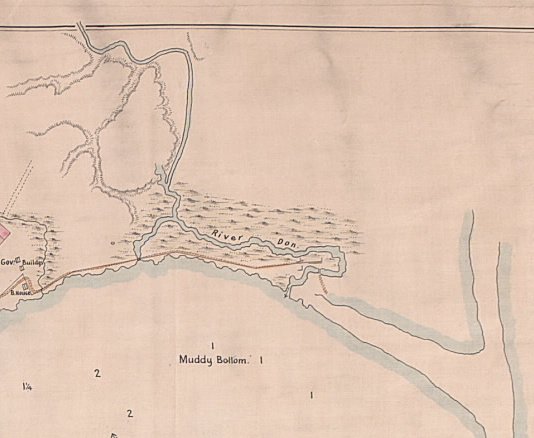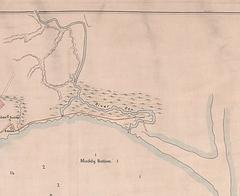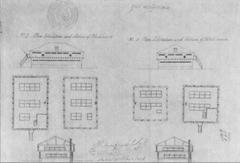
Fort York Visiting Hours, Tickets, and Historical Sites in Toronto
Date: 14/06/2025
Introduction to Fort York
Fort York National Historic Site is a cornerstone of Toronto’s history, offering an engaging window into Canada’s military heritage and early urban development. Established in 1793 by Lieutenant Governor John Graves Simcoe, Fort York was built to defend the Town of York—now Toronto—and played a critical role during the War of 1812, especially in the pivotal Battle of York in 1813. Today, the site preserves Canada’s largest collection of original War of 1812 buildings, including officers’ quarters, barracks, blockhouses, and fortification walls, all of which tell the story of Toronto’s resilience and growth (Wikipedia: Fort York; Toronto.ca: Fort York; Fort York Official).
Fort York is a vibrant cultural and educational hub. Visitors can experience guided tours led by costumed interpreters, interactive exhibits at the Visitor Centre, and live reenactments. Its downtown Toronto location ensures easy access via public transit, cycling, or walking. Whether you’re a history buff or a casual explorer, this guide provides all the essential information for your visit, including practical details on hours, tickets, tours, and amenities (TripJive; Chasing Chanelle).
Table of Contents
- Introduction to Fort York
- Historical Background
- Modern Significance and Preservation
- Visiting Fort York
- Frequently Asked Questions (FAQs)
- Conclusion
- References and Sources
Historical Background
Origins and Strategic Foundations (1793–1812)
Fort York was established as a defensive outpost to protect the new capital of Upper Canada after Simcoe moved it from Newark (Niagara-on-the-Lake) to York, further from the vulnerable US border. The site’s natural harbour and protective sandbar peninsula made it an ideal military stronghold. The original fort included stone-lined earthwork walls, barracks, blockhouses, magazines, and a government house. Fort York formed part of a defensive network along Lake Ontario and the St. Lawrence River (Wikipedia: Fort York; Toronto.ca: Fort York; militarybruce.com).
The War of 1812 and the Battle of York
The War of 1812 brought Fort York into the heart of conflict. On April 27, 1813, American forces attacked York, seeking to capture the fort and the town. Defended by British soldiers, Canadian militia, and Indigenous allies, the defenders were outnumbered. Major-General Roger Hale Sheaffe ordered a retreat and detonated the Grand Magazine, causing significant American casualties and forcing a temporary withdrawal by the attackers (Wikipedia: Battle of York; militarybruce.com). The battle’s aftermath, occupation, and rebuilding cemented Fort York’s legacy as a symbol of resilience.
Modern Significance and Preservation
Evolution as a Military Garrison
After the War of 1812, Fort York continued as Toronto’s main military garrison and harbor defense well into the late 19th century. Even following the construction of New Fort York, the site retained an active military presence until after World War II (Wikipedia: Fort York).
Heritage Preservation and Civic Identity
In the early 20th century, public advocacy movements successfully protected Fort York from demolition due to urban development pressures. The site was designated a National Historic Site in 1923, restored to its early 19th-century configuration, and reopened as a museum in 1934. The fight to preserve Fort York inspired wider heritage conservation in Toronto (Wikipedia: Fort York).
Cultural and Educational Hub
Today, Fort York is a dynamic site offering daily guided tours, interactive exhibits, reenactments, educational programs, and community festivals. The Garrison Common hosts major public events, including music and food festivals, further integrating the site into Toronto’s cultural landscape (Fort York Official; Scott & Maddie; Hungry416).
Visiting Fort York
Hours and Admission
- Standard Hours (2025): Wednesday to Sunday, 11:00 a.m. – 5:00 p.m.
- Closed: Mondays, Tuesdays, and select statutory holidays.
- Admission: Free general admission for all visitors in 2025. Special events may require separate tickets (Fort York Official; TripJive).
Guided Tours and Programming
- Free Guided Tours: 45-minute tours run hourly from 11:00 a.m., with last tours starting one hour before closing. Tours are in English, with other languages sometimes available by request (Chasing Chanelle).
- Self-Guided Exploration: Interpretive panels, QR codes, and the Discovery Gallery offer additional context and hands-on experiences.
- Special Events: Military reenactments, cooking demonstrations, cultural festivals, and educational workshops take place throughout the year (TripJive).
Visitor Facilities and Accessibility
- Visitor Centre: Orientation exhibits, restrooms, gift shop, and accessible entrances.
- Restrooms and Picnic Areas: Available throughout the site.
- Accessibility: Wheelchair-accessible main paths and Visitor Centre; some historic buildings have limited access due to stairs or narrow doorways.
- Food: No permanent café, but food trucks attend special events; visitors may bring their own snacks.
Directions and Travel Tips
Location: 250 Fort York Blvd, Toronto, ON M5V 3K9
Public Transit:
- From Bathurst Station: #511 Bathurst Streetcar south to Fleet Street at Fort York Blvd. Walk west on Fleet, right on Fort York Blvd.
- From Union Station: #509 Harbourfront Streetcar west to Fleet Street, then walk to the Visitor Centre.
Parking: Metered parking ($1/half hour) available in front of the Visitor Centre, under the Gardiner Expressway.
Cycling: Bike racks on-site and accessible via Toronto’s cycling network.
Tip: Plan for at least two hours to explore the site, and check for special events on the official event calendar.
Frequently Asked Questions (FAQs)
What are Fort York’s visiting hours?
Wednesday to Sunday, 11:00 a.m. – 5:00 p.m. (Check the official website for updates.)
Is admission free?
Yes, general admission is free for all visitors in 2025.
Are guided tours available?
Yes, free guided tours are offered hourly.
Is Fort York accessible?
The Visitor Centre and main pathways are accessible; some historic buildings have limited access.
Can I bring my pet?
Leashed pets are welcome in outdoor areas but not in historic buildings.
Is photography allowed?
Personal photography is encouraged; commercial filming requires advance permission.
Enhance Your Visit
- Virtual Tours & Maps: Access digital resources and virtual tours via the official Fort York website.
- Combine Your Visit: Explore nearby attractions such as the Distillery District, St. Lawrence Market, and CN Tower.
- Join the Community: Volunteer with “The Friends of Fort York” or subscribe to the “Fife and Drum” newsletter (Fort York Official).
- Stay Informed: Download the Audiala app for audio tours and follow Fort York on social media.
Conclusion
Fort York National Historic Site stands as an enduring symbol of Toronto’s early history and Canada’s military legacy. With free admission, engaging tours, accessible facilities, and a robust calendar of events, Fort York is an inclusive destination for visitors of all ages and backgrounds. Plan ahead using official resources, immerse yourself in authentic history, and discover why Fort York remains one of Toronto’s most treasured landmarks.
Explore more about Toronto’s heritage by visiting related historical sites and accessing digital and community resources. Begin your journey at Fort York for a memorable and enriching experience in the heart of the city.
References and Official Links
- Fort York: Toronto.ca
- Plan Your Visit – Fort York
- TripJive: Top Attractions at Fort York
- Wikipedia: Fort York
- MilitaryBruce.com: Fort York
- Chasing Chanelle: Why Visit Toronto
- Toronto For You – Fort York Visitor Information
- Tour by Transit – Fort York Directions




























































































































































































